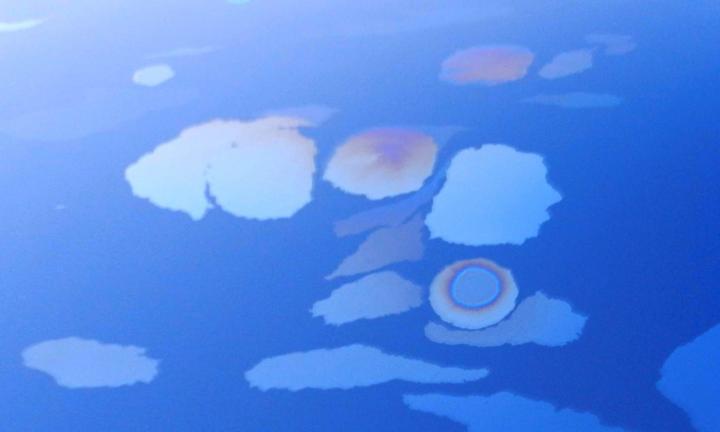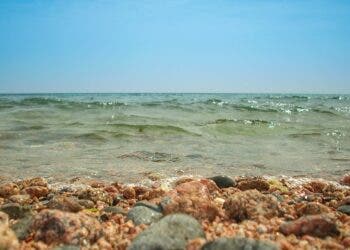Marine biologists study microbes in the waters above natural oil seeps in the Gulf of Mexico stumbled upon something unexpected. They found phytoplankton, tiny organisms that comprise the bottom of the marine food chain, thrive in waters with low concentration oil. In some cases, the population is double that a couple miles off the oil seep sites.

Previously, researchers subjected phytoplankton to various oil concentrations in the lab to test their sensitivity. Depending on the concentration, some cells collapsed while others survived. The researchers from the Ecosystem Impacts of Oil and Gas Inputs to the Gulf (ECOGIG) consortium are the first to show, however, that in some instances oil can actually help phytoplankton thrive.
It’s not yet clear how this happens, but most certainly it’s not the oil alone. Instead, it’s a combination of oil, bacteria and plankton. Somehow, the waters are more nutrient rich around these oil seeps, so the plankton can grow unchecked.
The team were tasked with investigating the interaction of oil seeps with marine life after the Deepwater Horizon oil well disaster in 2010 spewed oil across 11,200 square kilometers. Armed with a better understanding of these processes, researchers can design better preemptive measures and action plans in case of a new spill.
Natural oil seeps are far more benign, though. Hydrocarbons leak out of the ground through fractures and sediments in the bottom of the ocean, similarly to how freshwater springs leak water to the surface. The seeps cover an area between 1 to 100 square km and only last for a couple of days. The concentration is far lower than water contaminated from an oil spill, but it’s still very noticeable. You can smell it.
Lead author Nigel D’Souza, then a postdoctoral researcher at Lamont, and colleagues used a ship in the Gulf of Mexico monitoring chlorophyll fluorescence. Phytoplankton use photosynthesis (about half of all oxygen on the planet is made by these tiny critters), and as a byproduct they emit this energy called chlorophyll fluorescence. So, by monitoring this energy you can get a rough idea of how large the phytoplankton population is. Each time the ship recorded above an oil seep, researchers saw a spike. Water samples and satellite imagery confirmed that the phytoplankton thrives in the oily water.
“This is the beginning of evidence that some microbes in the Gulf may be preconditioned to survive with oil, at least at lower concentrations,” said Ajit Subramaniam, an oceanographer at Columbia University’s Lamont-Doherty Earth Observatory and coauthor of the study. “In this case, we clearly see these phytoplankton are not negatively affected at low concentrations of oil, and there is an accompanying process that helps them thrive. This does not mean that exposure to oil at all concentrations for prolonged lengths of time is good for phytoplankton.”
Journal Reference: Elevated surface chlorophyll associated with natural oil seeps in the Gulf of Mexico.






